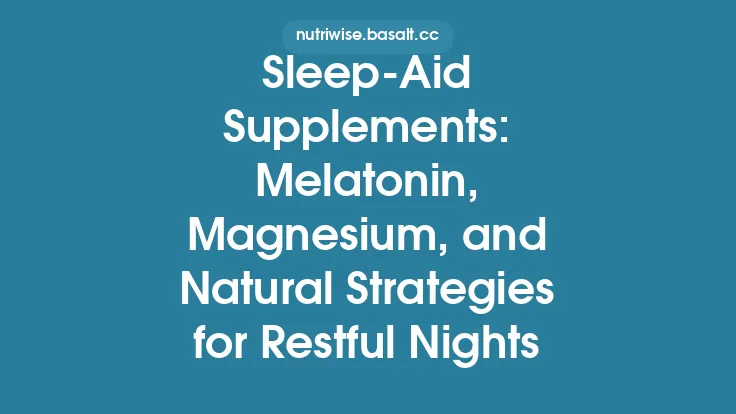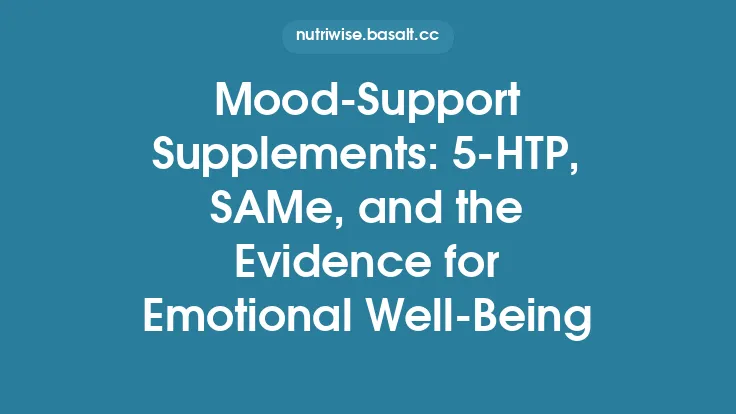Saffron, the vivid crimson threads harvested from the flower *Crocus sativus*, has been prized for centuries not only for its unmistakable flavor and aroma but also for its reputed health‑supporting properties. Modern research is beginning to validate many of the traditional claims, especially those related to mood regulation and visual function. This article explores the science behind saffron’s impact on emotional well‑being and eye health, outlines practical ways to incorporate the spice into everyday meals, and provides clear guidance on safe usage, storage, and potential interactions.
The Bioactive Compounds Behind Saffron’s Effects
Saffron’s therapeutic potential stems from a handful of potent phytochemicals:
| Compound | Approx. Concentration in Stigmas | Key Biological Actions |
|---|---|---|
| Crocin | 20–30 % (water‑soluble carotenoid) | Antioxidant, neuroprotective, improves retinal function |
| Safranal | 0.5–1 % (volatile oil) | Mood‑modulating, anxiolytic, anti‑depressive |
| Picrocrocin | 5–10 % (bitter precursor) | Contributes to taste; may have anti‑inflammatory effects |
| Kaempferol | Trace amounts | Antioxidant, supports vascular health |
These molecules work synergistically, influencing neurotransmitter pathways, oxidative stress, and micro‑circulation—processes central to both emotional balance and visual acuity.
How Saffron Influences Mood
1. Modulation of Neurotransmitters
- Serotonin: Safranal and crocin have been shown in animal models to increase synaptic serotonin levels, a neurotransmitter closely linked to feelings of happiness and calm.
- Dopamine & Norepinephrine: Some studies suggest saffron extracts can elevate dopamine and norepinephrine, which are involved in motivation and alertness.
2. Anti‑Inflammatory and Antioxidant Actions
Chronic low‑grade inflammation and oxidative stress are implicated in mood disorders such as depression and anxiety. Crocin’s strong free‑radical scavenging capacity helps protect neuronal membranes, while its anti‑inflammatory effects reduce cytokine activity that can otherwise disrupt mood regulation.
3. Clinical Evidence
- Randomized Controlled Trials (RCTs): Multiple double‑blind RCTs have compared saffron supplementation (30 mg/day of standardized extract) to placebo and to conventional antidepressants (e.g., fluoxetine). Results consistently show a statistically significant reduction in depressive symptom scores (often measured by the Hamilton Depression Rating Scale) after 6–8 weeks.
- Meta‑Analyses: Recent meta‑analyses encompassing over 1,000 participants conclude that saffron’s effect size for mild‑to‑moderate depression is comparable to that of standard pharmacotherapy, with a more favorable side‑effect profile.
4. Practical Takeaway
For individuals seeking a natural adjunct to mood support, a daily dose of 20–30 mg of standardized saffron extract (containing at least 2 % crocin) is the most evidence‑based recommendation. Whole‑saffron threads can be used in cooking, but the amount needed to reach therapeutic levels is impractically high; therefore, a high‑quality supplement is often the most reliable delivery method.
Saffron’s Role in Vision and Eye Health
1. Retinal Protection
The retina is highly metabolically active and vulnerable to oxidative damage. Crocin’s carotenoid structure enables it to:
- Neutralize Reactive Oxygen Species (ROS), protecting photoreceptor cells.
- Stabilize Membrane Lipids, preserving the integrity of retinal pigment epithelium.
2. Age‑Related Macular Degeneration (AMD)
- Clinical Trials: A 12‑month, double‑blind trial involving 60 participants with early AMD reported that daily supplementation with 20 mg of saffron extract improved macular pigment density and visual acuity compared to placebo.
- Mechanism: By enhancing blood flow to the choroid and reducing inflammatory mediators, saffron may slow the progression of drusen formation—a hallmark of AMD.
3. Night Vision and Contrast Sensitivity
Crocin’s similarity to lutein and zeaxanthin (well‑known macular pigments) suggests it can augment contrast sensitivity and low‑light vision. Small pilot studies have observed modest improvements in night‑time visual performance after 8 weeks of saffron supplementation.
4. Practical Takeaway
For ocular support, a daily intake of 20 mg of standardized saffron extract (≥2 % crocin) is again the most studied dose. Individuals with existing eye conditions should consult an ophthalmologist before initiating supplementation.
Safe Consumption: Dosage, Forms, and Contraindications
| Form | Typical Daily Dose | Bioavailability Notes |
|---|---|---|
| Whole Threads | 30–50 mg (≈ 10–15 threads) | Low bioavailability; best for culinary use |
| Standardized Extract (capsule/tablet) | 20–30 mg (≥2 % crocin) | High, consistent bioavailability |
| Powder (food‑grade) | 0.1–0.2 g (≈ a pinch) | Moderate; can be blended into dishes |
| Liquid Tincture | 0.5–1 mL (standardized) | Rapid absorption; convenient for those with swallowing difficulties |
Upper Limits and Toxicity
- Acute Toxicity: Ingesting >5 g of saffron at once can cause nausea, vomiting, and dizziness. This amount is far beyond typical culinary or supplemental use.
- Chronic Overdose: Long‑term consumption exceeding 1.5 g per day has been associated with uterine contractions and potential teratogenic effects in animal studies.
Populations Requiring Caution
- Pregnant Women: High doses (>5 g) are contraindicated due to uterine stimulant properties. Low culinary amounts are generally considered safe, but supplementation should be avoided unless under medical supervision.
- Individuals on Antidepressants: Because saffron can influence serotonin pathways, concurrent use with SSRIs or MAO inhibitors may increase the risk of serotonin syndrome. A healthcare professional should evaluate the combination.
- Bleeding Disorders: Saffron may have mild antiplatelet activity; patients on anticoagulants (e.g., warfarin) should discuss usage with their physician.
Culinary Integration: Making Saffron Part of Your Daily Menu
1. Unlocking Flavor and Color
- Blooming (Infusing) Technique: Crush a pinch of threads (≈ 0.1 g) and steep in 2–3 Tbsp of warm (not boiling) water, broth, or milk for 10–15 minutes. This releases both color and aroma, allowing you to drizzle the liquid into dishes.
- Avoid High Heat: Prolonged exposure to temperatures above 120 °C can degrade crocin and safranal, diminishing both health benefits and flavor.
2. Sample Recipes
| Dish | How Saffron Is Used | Approx. Saffron Content |
|---|---|---|
| Saffron‑Infused Quinoa Pilaf | Bloom threads in vegetable broth; stir into cooked quinoa with toasted nuts and raisins. | 0.05 g (≈ 5 threads) |
| Golden Turmeric‑Free Lentil Soup | Add a pinch of saffron to the broth during the final 5 minutes of simmering. | 0.03 g (≈ 3 threads) |
| Saffron‑Lemon Yogurt Parfait | Mix a few drops of saffron‑infused honey into Greek yogurt; layer with fresh berries. | 0.02 g (≈ 2 threads) |
| Saffron‑Spiced Baked Fish | Rub a paste of minced garlic, olive oil, and a saffron‑water reduction onto fillets before baking. | 0.04 g (≈ 4 threads) |
These portions provide a subtle sensory boost while contributing only a fraction of the therapeutic dose—ideal for daily culinary enjoyment.
3. Pairing for Enhanced Absorption
- Healthy Fats: Crocin is fat‑soluble; pairing saffron with olive oil, avocado, or nuts can improve its uptake.
- Vitamin C‑Rich Foods: Vitamin C may protect crocin from oxidative degradation during cooking, preserving its potency.
Storage: Preserving Potency Over Time
- Container: Store whole threads or powder in an airtight, opaque glass jar to protect from light and moisture.
- Temperature: Keep in a cool, dark pantry (15–20 °C). Refrigeration is optional but can extend shelf life, especially in humid climates.
- Shelf Life: High‑quality saffron retains most of its crocin and safranal for 2–3 years when stored properly. Check for loss of aroma or a faded orange‑red hue as indicators of degradation.
Quality Assurance: Choosing a Reliable Product
- Geographic Origin: Iran, Spain, and Kashmir produce the most reputable saffron. Look for labeling that specifies the region.
- ISO/ISO‑9001 Certification: Indicates adherence to standardized processing and testing.
- Laboratory Analysis: Reputable brands provide a certificate of analysis (COA) showing crocin content (≥2 %) and absence of contaminants (e.g., heavy metals, pesticide residues).
- Price Benchmark: Authentic saffron typically costs $10–$15 per gram. Extremely low prices may signal adulteration with turmeric, paprika, or synthetic dyes.
Potential Interactions with Medications and Supplements
| Medication / Supplement | Interaction Mechanism | Practical Guidance |
|---|---|---|
| SSRIs (e.g., sertraline, fluoxetine) | Additive serotonergic effect | Use only under physician supervision; monitor for signs of serotonin excess (e.g., agitation, tremor). |
| MAO Inhibitors | Heightened risk of serotonin syndrome | Generally contraindicated; avoid combined use. |
| Anticoagulants (warfarin, clopidogrel) | Mild antiplatelet activity may increase bleeding time | Discuss dosage with a healthcare provider; routine monitoring of INR may be warranted. |
| Blood Pressure Medications | Possible vasodilatory effect of crocin | Generally safe; observe for unexpected drops in blood pressure. |
| Herbal Adaptogens (e.g., ashwagandha, rhodiola) | Overlapping mood‑modulating pathways | No known adverse synergy, but start with lower doses to assess tolerance. |
Frequently Asked Questions
Q: Can I achieve therapeutic benefits by using saffron only in cooking?
A: Culinary use provides modest amounts of crocin and safranal, which contribute to overall antioxidant intake but typically falls short of the 20–30 mg daily dose shown to affect mood or vision. For targeted benefits, a standardized supplement is recommended.
Q: Is there a difference between “saffron threads” and “saffron powder”?
A: Threads retain the full complement of volatile oils and carotenoids, whereas powder may lose some aroma during processing. However, high‑quality powder that is stored properly can still deliver comparable crocin levels.
Q: How quickly can I expect to notice mood improvements?
A: Clinical trials report measurable reductions in depressive scores after 4–6 weeks of consistent supplementation. Individual response times vary based on baseline severity and lifestyle factors.
Q: Does saffron help with eye strain from screen time?
A: While saffron supports retinal health, evidence specific to acute screen‑induced eye strain is limited. Regular intake may contribute to long‑term ocular resilience, but ergonomic measures (e.g., the 20‑20‑20 rule) remain essential.
Bottom Line: Integrating Saffron for Mood and Vision
Saffron stands out among culinary spices for its scientifically backed capacity to influence both emotional well‑being and eye health. The key takeaways for safe, effective use are:
- Aim for 20–30 mg of standardized extract daily (≥2 % crocin) to align with the most robust research.
- Use whole threads sparingly in cooking to enjoy flavor and modest health benefits without exceeding safe culinary limits.
- Store properly—dark, airtight, cool—to preserve the delicate bioactive compounds.
- Check quality through origin, certification, and COA to avoid adulterated products.
- Consult healthcare professionals if you are pregnant, on serotonergic or anticoagulant medications, or have pre‑existing eye conditions.
When incorporated thoughtfully, this luxury spice can become a delightful, health‑promoting addition to a balanced diet—brightening both the plate and the mind, while gently supporting the eyes that take it all in.





